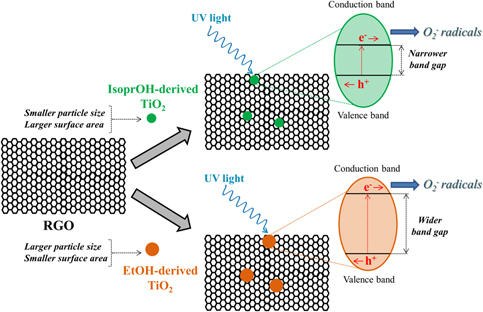Crossref Citations
This article has been cited by the following publications. This list is generated based on data provided by
Crossref.
Lin, Chunling
Gao, Yifeng
Zhang, Jiaoxia
Xue, Dan
Fang, Hua
Tian, Jiayong
Zhou, Chunli
Zhang, Chanjuan
Li, Yuqing
and
Li, Honggang
2020.
GO/TiO2 composites as a highly active photocatalyst for the degradation of methyl orange.
Journal of Materials Research,
Vol. 35,
Issue. 10,
p.
1307.
Rodríguez, V.
Camarillo, R.
Martínez, F.
Jiménez, C.
and
Rincón, J.
2021.
High-pressure synthesis of rGO/TiO2 and rGO/TiO2/Cu catalysts for efficient CO2 reduction under solar light.
The Journal of Supercritical Fluids,
Vol. 174,
Issue. ,
p.
105265.
Gomes, Ana L.M.
Andrade, Pedro H.M.
Palhares, Hugo G.
Dumont, Marcello R.
Soares, Daniel C.F.
Volkringer, Christophe
Houmard, Manuel
and
Nunes, Eduardo H.M.
2021.
Facile sol–gel synthesis of silica sorbents for the removal of organic pollutants from aqueous media.
Journal of Materials Research and Technology,
Vol. 15,
Issue. ,
p.
4580.
Almeida, Lariana Negrão Beraldo de
Josué, Tatiana Gulminie
Nogueira, Othavio Henrique Lupepsa
Dias, Daniele Toniolo
Tusset, Angelo Marcelo
Santos, Onélia Aparecida Andreo dos
and
Lenzi, Giane Gonçalves
2021.
Quarry Residue: Treatment of Industrial Effluent Containing Dye.
Catalysts,
Vol. 11,
Issue. 7,
p.
852.
Hardiansyah, Andri
Budiman, William J.
Yudasari, Nurfina
Isnaeni
Kida, Tetsuya
and
Wibowo, Arie
2021.
Facile and Green Fabrication of Microwave-Assisted Reduced Graphene Oxide/Titanium Dioxide Nanocomposites as Photocatalysts for Rhodamine 6G Degradation.
ACS Omega,
Vol. 6,
Issue. 47,
p.
32166.
Escaliante, Lucas Caniati
Pereira, Andre Luis de Jesus
Affonço, Lucas Jorge
and
da Silva, Jose Humberto Dias
2021.
Multilayered TiO2/TiO2−x/TiO2 films deposited by reactive sputtering for photocatalytic applications.
Journal of Materials Research,
Vol. 36,
Issue. 15,
p.
3096.
Silva, Lucas M.C.
Gonçalves, Bruno S.
Braga, Jorgimara de O.
de Souza, Tarcizo C.
de Castro, Vinícius G.
Silva, Glaura G.
Lacerda, Glenda R.B.S.
Matencio, Tulio
Barbosa, Tiago C.
Viana, Carlos M.
Houmard, Manuel
and
Nunes, Eduardo H.M.
2021.
Preparation of titania-reduced graphene oxide composite coatings with electro- and photosensitive properties.
Applied Surface Science,
Vol. 538,
Issue. ,
p.
148029.
Bhullar, Shilpy
Goyal, Navdeep
and
Gupta, Shikha
2021.
Factors influencing synthesis of titania nanoparticles – A short review.
Vol. 2352,
Issue. ,
p.
040036.
Zong, Zhifang
Chen, Depeng
Zhao, Chunxiao
Tang, Gang
Ji, Yilong
Zhang, Hao
and
Lv, Zhong
2021.
Application of Ce–Eu/TiO2 phase change material as the wall material to improve the indoor environment.
Journal of Materials Research,
Vol. 36,
Issue. 3,
p.
615.
Duan, Yonghua
Gou, Ming-Lei
Guo, Yafei
Cai, Junqing
Song, Wensheng
Liu, Zhen
and
Zhou, Erpeng
2021.
In situ hydrothermal synthesis of TiO2–RGO nanocomposites for 4-nitrophenol degradation under sunlight irradiation.
Journal of Materials Research,
Vol. 36,
Issue. 4,
p.
906.
Javid, Muhammad
Abbas, Akmal
Farid, Amjad
Xu, Hiaohui
Sammed, Khan Abdul
Irfan, Muhammad
Rauf, Abdul
Dong, Xinglong
and
Pan, Lujun
2022.
Arc discharge process for in-situ growth of thermally stable single-phase Cr3C2@C NCs for photocatalytic applications.
Journal of Materials Research,
Vol. 37,
Issue. 4,
p.
909.
Andrade, Pedro H. M.
Gomes, Ana L. M.
Palhares, Hugo G.
Volkringer, Christophe
Moissette, Alain
Victória, Henrique F. V.
Hatem, Nádia M. A.
Krambrock, Klaus
Houmard, Manuel
and
Nunes, Eduardo H. M.
2022.
Post-synthetic modification of aluminum trimesate and copper trimesate with TiO2 nanoparticles for photocatalytic applications.
Journal of Materials Science,
Vol. 57,
Issue. 7,
p.
4481.
Kusworo, Tutuk Djoko
Irvan
Kumoro, Andri Cahyo
Nabilah, Yasmin
Rasendriya, Aufa
Utomo, Dani Puji
and
Hasbullah, Hasrinah
2022.
Advanced method for clean water recovery from batik wastewater via sequential adsorption, ozonation and photocatalytic membrane PVDF-TiO2/rGO processes.
Journal of Environmental Chemical Engineering,
Vol. 10,
Issue. 6,
p.
108708.
Marra, Maira
Dumont, Marcello
Palhares, Hugo G.
Alcamand, Himad A.
Houmard, Manuel
and
Nunes, Eduardo H. M.
2022.
Structural and photocatalytic properties of sol–gel-derived TiO2 samples prepared by conventional and hydrothermal methods using a low amount of water.
Journal of Sol-Gel Science and Technology,
Vol. 103,
Issue. 1,
p.
97.
Zheng, Alvin Lim Teik
Sabidi, Sarah
Ohno, Teruhisa
Maeda, Toshinari
and
Andou, Yoshito
2022.
Cu2O/TiO2 decorated on cellulose nanofiber/reduced graphene hydrogel for enhanced photocatalytic activity and its antibacterial applications.
Chemosphere,
Vol. 286,
Issue. ,
p.
131731.
Souza, Ingrid E.P.
Cambraia, Luciana V.
Gomide, Viviane S.
and
Nunes, Eduardo H.M.
2022.
Short review on the use of graphene as a biomaterial –prospects, and challenges in Brazil.
Journal of Materials Research and Technology,
Vol. 19,
Issue. ,
p.
2410.
Kong, Kelvert
Weng, Ying
Lam, Weng Hoong
and
Lai, Sin Yuan
2023.
Environmental Footprint Assessment of Methylene Blue Photodegradation using Graphene-based Titanium Dioxide.
Bulletin of Chemical Reaction Engineering & Catalysis,
Vol. 18,
Issue. 1,
p.
103.
Andrade, Pedro H.M.
Palhares, Hugo
Volkringer, Christophe
Loiseau, Thierry
Hureau, Matthieu
Nunes, Eduardo
and
Moissette, Alain
2023.
State of the art in visible-light photocatalysis of aqueous pollutants using metal-organic frameworks.
Journal of Photochemistry and Photobiology C: Photochemistry Reviews,
Vol. 57,
Issue. ,
p.
100635.
Ayala, I V
Mejía-Ospino, E
Gonzalez-Arias, C
Cabanzo-Hernández, R
and
V-Niño, E D
2024.
Evaluation of sol-gel and solvothermal method on titanium dioxide and reduced graphene oxide nanocomposite.
Journal of Physics: Conference Series,
Vol. 2726,
Issue. 1,
p.
012003.
KOM, LEIVON CHUNGKHOLEN
SINGH, HENAM PREMANANDA
and
NAGARAJAN, SANKARANARAYANAN
2024.
RECENT PROGRESS IN THE SYNTHESIS AND PHOTOCATALYTIC DEGRADATION OF ORGANIC POLLUTANTS BY GRAPHENE-BASED TiO2 NANOCOMPOSITE: A REVIEW.
Surface Review and Letters,
Vol. 31,
Issue. 12,


